Number Needed To Treat
How a relatively unused metric can help you score chicks at the Limelight.
That's right, I said score chicks. You got a problem with that?
Current Psychiatry has an article about Number Needed To Treat which is so staggeringly abstruse that it is nearly unreadable, observe:
A non-statistically significant NNT would have a CI that includes a negative number and a positive number: When comparing intervention A with intervention B, A might be better than B or B might be better than A. One bound of the CI may be a NNT of 10 and the other may be –10. It would be tempting to describe the CI as –10 to 10, but this would be misleading.and later:
The truth-operation is the way in which a truth-function arises from elementary propositions. According to the nature of truth-operations, in the same way as out of elementary propositions arise their truth-functions, from truth-functions arises a new one. Every truth-operation creates from truth-functions of elementary propositions, another truth-function of elementary propositions i.e. a proposition. The result of every truth-operation on the results of truth-operations on elementary propositions is also the result of one truth-operation on elementary propositions.Every proposition is the result of truth-operations on elementary propositions. Here it becomes clear that there are no such things as logical objects...
which is strange, because NNT was invented specifically to be easy to understand and apply. Oh well.
Number Needed To Treat is the number of people who would need to receive the treatment before you could appreciate a difference between the treatment and something else.
Remember that one time after the riots when you looted the Rite Aid and grabbed a bunch of pills that you thought were Lexapros, but could be penicillin--how many depressed people would you have to give the pills to before you could be confident that they were Lexapros, and not penicillin? For example, if you give it to two people, and both get better, you can't be certain it wasn't all placebo effect, right? Conversely, if neither person gets better, it doesn't prove they were both penicillins, right? You'd have to try it on more people. How many? Whatever the answer is, that's the Number Needed To Treat.
So NNT is related to the difference between a) how well the treatment works; b) how well the comparator works.
Here's how to calculate NNT: "what is the difference in the rates of success between two maneuvers? Divide into 100."
The year is 1984 and a guy who looks disturbingly like any of the guys from Jefferson Airplane (formerly Flock of Seagulls) goes to the Limelight in NYC to mack some stellas (he still calls them that, but that's because one of them hit him in the back of the head with her husband's fist) and always manages to get one to go home with him: "persistence beats resistance," the bouncer told him, and this proved to be good advice, along with the thing about Halcion, and rolling your suit jacket sleeves up, all of which... wow... really, thanks... outstanding. And the leather tie thing.
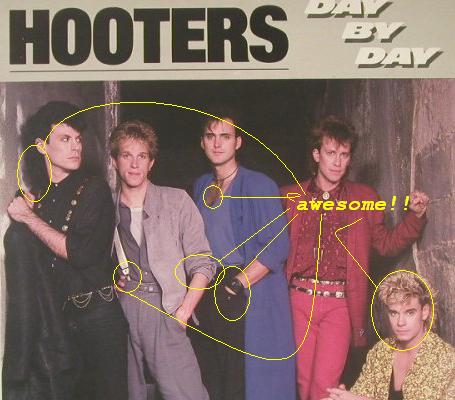
(1)
Inside, he gets shot down 8 out of 10 times. ("Whaddya want? They're all dykes. 'WHERE'S THE BEEF?' Ha! I kill me!") Over the course of the year, before he heads to the Hamptons for the summer to frighten women into lesbianism there, his Visicalc spreadsheet shows that the 20% success rate is pretty consistent. 1 in 5 times he's at a girl's breast like a .14 BAL slammed into an airbag. Here, a found a picture of him and his friend doing just that on my internet cache, along with other pics that I told my mom I have no idea how they got there:
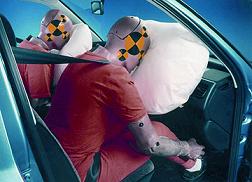
A threesome with the guys from A-ha.
So 20% success rate-- -- "1 in FIVE, ace!" That's how smooth he is. He's even more smooth than that guy in the Shakira "Hips Don't Lie" video, no, not the guy from the Fugees, I mean this guy:
Trevor knew if he could just win the dance off, Molly would go steady with him. But first was the little matter of his invisibility.
But let's say he spent his time simply sitting at the bar and keeping his crap hole firmly shut, never going up to women at all-- they came to him-- maybe they saw his internet profile-- and he still scores 1 in 10 times. So while he can brag to his friends that his rap is so tight (2) that it doubles his success rate (from 10% to 20%), in fact it only raises it 10 percentage points. His number needed to treat is therefore 10 "divided into 100": 100/10=10. He has to actively approach ten extra women to be able to attribute one success to his rap.
So let's review:
his nightly success rate: 100%.
his rap's success rate: 20%
his "shutting up and just sitting there" success rate: 10%.
Here's how these stats would appear in his daily life:
- Personal ad in the Village Voice: "100% better! I so rule!"
- City Order of Protection: "...risk to the women of New York was increased ten percentage points..."
- Case report in Journal of Infectious Diseases: "Number Needed To Harm: 10"
LET'S SAY I WANT TO GET ALL SCIENCEY. CAN YOU USE REAL PSYCHIATRIC EXAMPLES THAT DON'T INVOLVE PEOPLE I WILL EVENTUALLY SEE ON BILL KURTIS'S AMERICAN JUSTICE?
American Justice was canceled, it's now called Where Are They Now? That notwithstanding, here's your psychiatry, from a study done by a bunch of scienticians. What's the Number To Treat for Depakote for prevention of mood episodes in one year?
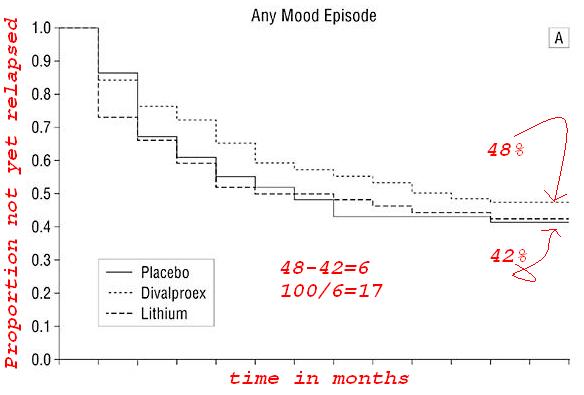
That's 17, seventeen. STOP PRESCRIBING DEPAKOTE. (3)
In practice, the more studies you can pool together, the more accurate/useful will be your calculated NNT, though simultaneously how you pool data can affect the NNT. Consider two trials, one with 10000 people and an NNT of 60-- but that sucked in design and execution; and another with 50 people and an NNT of 2, but much better design, etc. Simply adding the raw numbers of people together will skew the data in favor of the large but error-ridden NNT.
SO WHAT'S ALL THE FUSS OVER NNT? WHY DO DRUG COMPANIES REFUSE TO PUBLISH THEM?
The NNT helps you decide if the treatment is worth it.
ISN'T THAT WHAT THE FDA IS FOR?
No, the FDA-- wait-- are you serious?
IF YOU KNOW A DRUG IS HELPFUL, ISN'T IT ALWAYS WORTH IT? IF THE DRUG HELPS EVEN A LITTLE, AND HAS FEW SIDE EFFECTS, WHY NOT GIVE IT TO EVERYONE WHO COULD BENEFIT?
Because this isn't France, commtard. Who's going to pay for all these pills?
Pretend a drug exists that can reduce the risk of heart attacks in people with high cholesterol by 50%, and let's call it Lipitor. Pretend it costs $5/day, so $1825/yr. Is reducing the risk of heart attack by 50% worth $1825/yr? I say yes, so long as we're talking about me.
But let's pretend the actual reduction is from a baseline rate of 8% to Lipitor's 4%. So the NNT for Lipitor compared to placebo is 100/4=25. 25 people have to get Lipitor to prevent one heart attack. 25 people is $45,625/yr. Is $45,625 worth it to prevent one heart attack, or, at that price, should we maybe just stop eating donuts?
You can see how an insurance company might not want to cover certain medications. What's amazing to me is how skeptical everyone is about Pharma, how they distrust anything they say, and whine that the drugs are too expensive, but they've all bought Pharma's biggest scam: that these drugs are necessary.
The only way to solve this problem is to force doctors to consider the cost of the medications.
Give the doctor a budget, say, $20/day per patient, and let him choose whatever drugs he wants, generics, brand, doses, etc. "I can give you Viagra if you stop eating donuts and get off Lipitor. In fact, you might be able to use the Viagra if you stop eating donuts."
Doctors hate this, partly because they see individuals and want to maximize gains in that single individual, but mostly because they're lazy. It is much easier to give a drug that works (e.g. Lipitor) than to affect behaviors (e.g. donuts.) But it's only easier because they don't have to think about the cost. Doctors are completely sheltered from the cost analysis, all they see is "50% reduction in heart attacks? I'd be crazy not to!"
The only time a doctor cites prescription drug costs is as a stepping stool to mount his high horse.
Make them pay, things will be different. Then you'll see doctors communicating with one another, psychiatrists with cardiologists, etc, trying to decide what meds to use on a guy. Currently, doctors don't even know what other doctors prescribed in a patient. They don't decide anything-- they hit up the flowchart.
I stand by this assertion: I can reduce overall pharmacy costs by 20%, yet still maintain outcomes. In other words, I can save $20 billion a year. There, I just helped pay for Iraq. I know, you're going to say Iraq isn't worth the money, etc, etc. Bite me. It's not even lunchtime, and I just paid for Iraq. What have you done today? Face!
Here's some NNTs to keep you warm at night:
- Ritonavir vs. placebo in AIDS-- death in a year: 14
- Aspirin vs. placebo in treated hypertensives-- MI in a 4 years: 208
- Flu shot vs. placebo-- flu symptoms in a season: 12
- Prozac + folate vs. Prozac alone- depression response in 10 weeks: 5! (Wow?!)
----
(1) Before you nutbags flame me, I know that's not Flock of Seagulls, and I'm not necessarily trying to say they look alike, nor am I trying to imply that one guy, the Flock of Seagulls guy, and the guy from Hall and Oates are in fact the same person, ok? Sometimes people look like other people. (4)
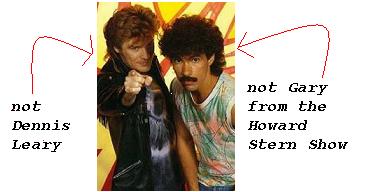
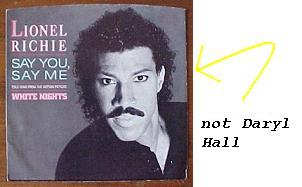
(2) He wouldn't have actually said that in 1984. What he would have said was "Say hello to my little friend!" even though it has nothing to do with the topic at hand, because that's what everyone was saying in 1984. Do you know why? Syphilis, that's why.
(3) Someone is going to email me and say that NNTs based on survival data should be calculated using hazard ratios, and not on the difference in rates. You know what I have to say to that? Go to hell, that's what. I could also respond that both methodologies provide estimates of the NNT, and the difference between the two results is small and inconsequential, and anyway still within the 95% confidence interval, but I'm sticking with go to hell.
(4) Which totally reminds me of a hilarious bit by Patton Oswalt (from memory, so...):
...people are getting plastic surgery to look like famous movie stars, Brad Pitt, George Clooney-- good looking men, for sure, but let's have a little perspective. If they had plastic surgery in the 70s there's be guys walking around looking like Hall and Oates. "Yeah, all right, life is good... I look like Daryl Hall from Hall and Oates... I'm on a pussy train that's never going to derail, never!
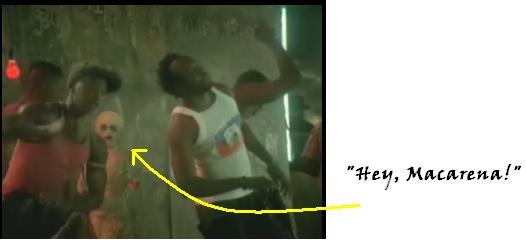
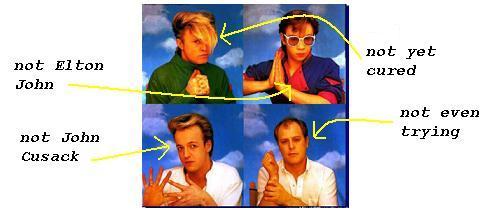
10 Comments